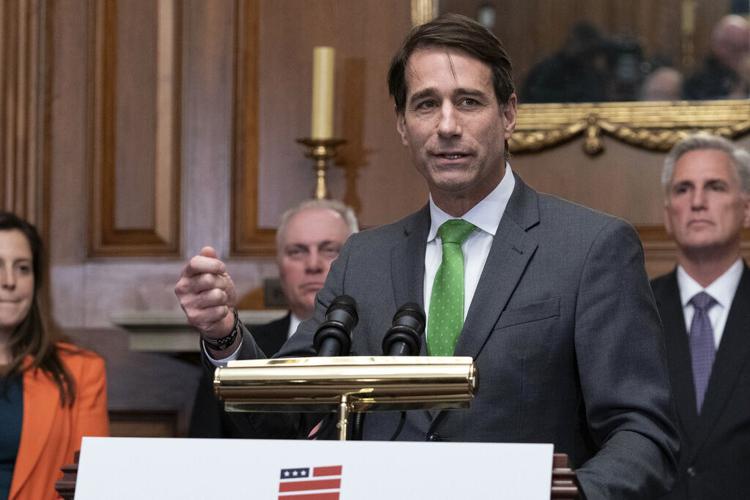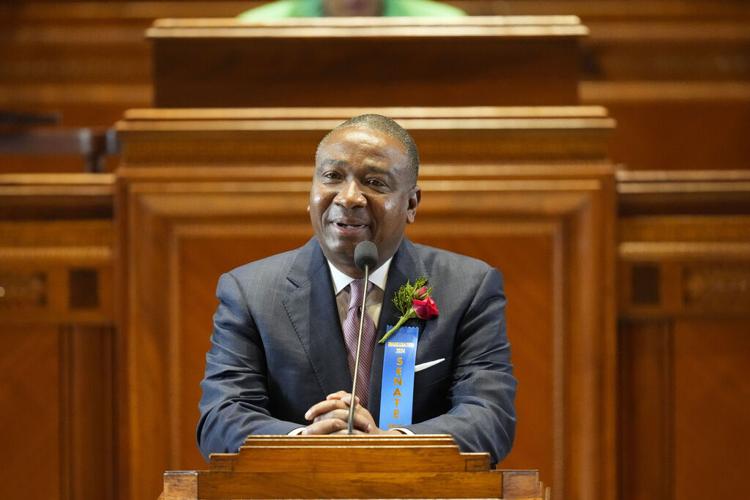WASHINGTON – A court’s decision late Tuesday to throw out the maps of the districts used to elect Louisiana’s six U.S. House members has thrown this fall's election into chaos, setting up the potential for a last-minute fight before the U.S. Supreme Court.
A 2-1 ruling by a panel chosen by 5th U.S. Circuit Court of Appeals Chief Judge Priscilla Richman in Callais v. Landry forbids the state from using its new congressional election maps, which included two minority-majority districts, because the new districts amount to “an impermissible racial gerrymander.”
What happens next is unclear. The judges scheduled a hearing Monday to consider remedies now that they threw out the Legislature's election maps. But they only have until May 15 to settle on the new maps, according to state elections officials, who say that's how much lead time they need before the Nov. 4 election.
The panel could order a new map immediately drawn by a special master. Or it could pick one of the maps with two Black districts that was proposed previously and rejected. Or it could tell the Legislature, which is in session, to create a new one. Or the U.S. Supreme Court could act on the various appeals with unusual swiftness.
Though the Legislature drew the maps the judges rejected, Louisiana lawmakers may be perfectly happy with the panel's ruling. After all, when they first drew new maps after the 2020 census, they tried to keep the status quo – a single Black-majority district among six in a state where one-third of the population is African American – in place.
But after another federal judge made clear she would redraw the districts if the Legislature didn't, lawmakers regrouped in January and came up with new maps that created a second minority-majority district. The new maps targeted U.S. Rep. Garret Graves, R-Baton Rouge, who has made powerful enemies in his own party, for extinction.
A dozen "non-Black" voters filed a court challenge to those new maps, arguing that race was the sole criteria used to draw the elections maps the way they were drawn.
Two of the three judges on the panel agreed that the map, which connected predominantly Black neighborhoods in and around Baton Rouge, Lafayette, Alexandria, Natchitoches and Shreveport, violated the U.S. Constitution and Section 2 of the Voting Rights Act.
Both judges were appointed by former President Donald Trump, while the dissenting judge was appointed by former President Bill Clinton.
"This puts a big quagmire in congressional elections, regardless of the candidates," said state Sen. Cleo Fields, a Baton Rouge Democrat who has already announced a run in the second minority-majority district created by the Legislature. "We don’t have a map. At the end of the day, the [U.S.] Supreme Court will have to decide this case. ...We appealed to the Supreme Court today."
An appeal also has been filed by Black voters, and state Attorney General Liz Murrill agrees with Fields that the Supreme Court is going to have to weigh in. But that could lead to the panel's decision being set aside temporarily and the fall elections being held under the map with two minority-majority districts if the appeals are not swiftly decided.
The 5th Circuit panel heard the case in Shreveport in early April. Because it waited so long to file its decision, the whole process was thrown into confusion and will require several matters to be pursued at the same time, said Michael Li, one of the nation’s leading experts on redistricting, which happens after every decennial census.
“It’s a little bit liking watching gymnastics at the Olympics, where there are multiple events going on at the same time,” Li said.
Appeal of the 5th Circuit panel's ruling. May 1, 2024
Range of possibilities
Li believes it's fairly likely that Tuesday’s decision could be stayed until the appeals are decided, Li said.
The panel could choose to stay its own ruling, or the Supreme Court could order it. That would likely mean that the elections this fall would revert to maps the Legislature approved – the same ones the panel threw out Tuesday – that have two minority-majority districts.
“All of this is going to shake out, but the next few weeks are going to be very chaotic,” said Li, who as senior counsel at New York’s Brennan Center’s Democracy Program follows similar litigation across the nation.
Black voters who had sought a second minority-majority district decried the federal panel's ruling and appealed it Wednesday.
“This decision runs counter to this precedent and the basic facts of this case — that the map was guided by politics more so than race. We will not give up this fight,” said Stuart Naifeh, redistricting manager for the Legal Defense Fund, which shepherded the case for Black voters.
Community activist Ashley Shelton, president and CEO of Power Coalition for Equity and Justice, said: “We will continue to fight for a map that reflects our communities, that honors the promise of the Voting Rights Act, and that respects the voices of thousands of Louisianians who have engaged throughout the redistricting process. We have been clear since day one in our call for a fair and representative map.”
The 2020 census revealed Louisiana’s Black population increased while the White population decreased as a percentage of the state's 4.6 million residents. Still, Louisiana’s Legislature passed a congressional map in 2022 that kept the status quo in place, with Black voters having a majority in only one of six congressional districts.
U.S. District Judge Shelly Dick of Baton Rouge, who was appointed by former President Barack Obama, told legislators in 2022 that two of the six congressional districts must include enough minority voters that a Black candidate would have a fighting chance to win in a state where a majority-White district has never chosen a Black congressperson.
Under Section 2 of the federal Voting Rights Act, when the addition of a minority-majority congressional district is required, race can be a factor, but not the sole criteria. The district also needs to be compact and represent people with similar interests, to the extent possible.
The two federal judges who shot down the new maps, Trump appointees Robert R. Summerhays and David C. Joseph, wrote this week that "the unusual shape of the district reflects an effort to incorporate as much of the dispersed Black population as was necessary to create a majority-Black district.” Testimony also suggested that race was the predominant criteria, they wrote.
Fifth U.S. Circuit Court of Appeals Judge Carl E. Stewart, a Clinton appointee, disagreed. "The totality of the record demonstrates that the Louisiana Legislature weighed various political concerns — including protecting of particular incumbents — alongside race, with no factor predominating over the other," he wrote.
Tyler Bridges, of the Capitol news bureau, contributed to this report.










